Why is Loan Forgiveness for Specific Careers Important?
The cost of education has been steadily rising over the years, leaving many graduates burdened with significant student loan debt. This debt can have a long-lasting impact, affecting various aspects of an individual’s life, such as their ability to buy a home, start a family, or save for retirement.
To alleviate this burden, many loan forgiveness programs have been implemented, specifically targeting certain careers. In this blog post, we will explore the pros and cons of loan forgiveness programs, discuss loan repayment assistance programs (LRAPs), and highlight the impact of loan forgiveness on professionals.
Pros and Cons of Loan Forgiveness Programs
Advantages of Loan Forgiveness Programs
Loan forgiveness programs offer numerous benefits to individuals pursuing careers in specific fields. One of the most significant advantages is the opportunity to have a portion or even the entirety of their student loans forgiven. This can provide immense relief, allowing individuals to focus on building their careers and financial stability.
Additionally, loan forgiveness programs often incentivize professionals to work in underserved areas, such as rural communities or low-income neighborhoods, where their skills and expertise are most needed. By doing so, these programs help address critical gaps in healthcare, education, and other essential services.
Disadvantages of Loan Forgiveness Programs
While loan forgiveness programs offer substantial benefits, they also have some drawbacks that individuals should consider. One major disadvantage is the potential tax implications of loan forgiveness. In many cases, forgiven loan amounts are considered taxable income, which can result in a significant tax bill. This unexpected financial burden can catch individuals off guard and negate some of the benefits of the loan forgiveness program.
Additionally, loan forgiveness programs often have strict eligibility criteria and require individuals to meet specific requirements, such as working in designated areas or for specific employers. This can limit career mobility and restrict individuals’ options for professional growth.
Loan Repayment Assistance Programs (LRAPs)
Overview of LRAPs
Loan Repayment Assistance Programs (LRAPs) are another option for individuals seeking assistance with their student loan debt. Unlike loan forgiveness programs, LRAPs provide financial assistance to borrowers by helping them make their monthly loan payments. These programs are often offered by employers, organizations, or educational institutions as a way to attract and retain talented professionals.
Eligibility Requirements for LRAPs
Each LRAP has its own set of eligibility requirements, which can vary depending on the sponsoring entity. Generally, LRAPs target individuals working in certain fields, such as public service, non-profit organizations, or specific professions like healthcare or education. Eligibility may also be based on income level, with LRAPs primarily targeting individuals with lower incomes who may struggle to make their loan payments. It’s essential for individuals to thoroughly research and understand the eligibility criteria of LRAPs they are interested in to determine if they qualify.
The Impact of Loan Forgiveness on Professionals
Alleviating the Financial Burden of Student Loans
Loan forgiveness programs and LRAPs have a significant impact on professionals by alleviating the financial burden of student loans. By reducing or eliminating their monthly loan payments, individuals can allocate those funds towards other essential expenses, such as housing, healthcare, or saving for the future. This financial relief can greatly improve individuals’ quality of life and provide them with more opportunities for personal and professional growth.
Attracting and Retaining Talent
Loan forgiveness programs and LRAPs are not only beneficial to individuals but also to employers and organizations. These programs can be powerful recruitment tools, attracting highly skilled professionals who may otherwise be deterred by the burden of student loan debt. By offering loan forgiveness or repayment assistance, companies can position themselves as employers of choice, creating a competitive advantage in the job market.
Additionally, these programs can help with employee retention, as individuals are more likely to stay with an employer that supports their financial well-being.
Conclusion
Loan forgiveness programs and LRAPs play a crucial role in lightening the burden of student loans for individuals pursuing specific careers. These programs offer advantages such as the opportunity for loan forgiveness, incentivizing professionals to work in underserved areas, and addressing critical gaps in essential services. However, it’s essential to consider the potential tax implications and eligibility criteria associated with these programs.
Loan forgiveness for specific careers is an essential tool in addressing the growing student loan debt crisis. These programs provide individuals with much-needed relief, allowing them to focus on their careers and financial stability.
By understanding the pros and cons of loan forgiveness programs, exploring LRAPs, and considering the impact on professionals, individuals can make informed decisions regarding their student loan debt and take steps towards a brighter financial future.







